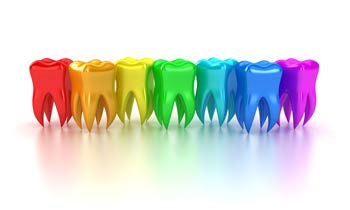Oral and Maxillofacial Surgery

We offer an extensive list of Services, some of which are included below. If you have questions about any of our treatment options please give our friendly staff a call to see about scheduling an appointment so we can go over your specific treatment options in more detail. You can click on any of the topics listed below to learn more.
Impacted wisdom and cuspid (or canine) teeth are fairly common. To correct impacted teeth, there are a few treatment options. For impacted wisdom, the most common procedure is extraction. For impacted canine teeth, several treatment modalities are available. Treatment can involve orthodontics (braces) to allow open spaces for proper eruption, a visit to the oral surgeon to remove over retained primary (baby) teeth or to surgically expose the tooth and place an orthodontic bracket to help bring it down into proper alignment.
Depending on the type of facial trauma sustained there are many different treatment options available. However, the goal of treatment is to stop any bleeding from occurring, create a clear airway, repair any broken or fractured bone, and or suture any damaged soft tissue. Treatment is immediate, as long as there are no neck fractures or life-threatening injuries.
To treat TMJ disorders, first the cause has to be identified. In less severe cases TMJ disorders can be treated with self-managed care (easting soft foods, using ice packs, avoiding extreme jaw movement) or nonsurgical treatments (anti-inflammatory medications, Botox injections, stabilization splints). In severe cases surgical treatments (jaw joint replacements) may be necessary.
TMJ conditions fall into three main categories:
- Myofascial pain which involves discomfort or pain in the muscles that control jaw function.
- Internal derangement of the joint that can mean a displaced disc, dislocated jaw, or injury to the condyle.
- Arthritis which is degenerative inflammatory disorder.
Orthognathic surgery can involve surgical procedures such as an osteotomy (bone cutting), bone grafts, or distraction osteogenesis (stretching of the bone) and orthodontic (braces) care. Orthognathic correction is conducted in stages, and the course of treatment can last a few months up to one year or more.
In order to perform the procedure successfully, the jawbones will be repositioned in accordance with one’s specific needs. Inconspicuous incisions are usually made inside, and if needed, outside the mouth to allow for surgical plates, screws, wires and rubber bands to be used to hold your jaws in their new positions.
A series of surgeries can restore normal function and achieve a more normal appearance with minimal scarring.
A cleft lip is usually repaired between the ages of 3 to 6 months. Some children require a lip adhesion or a device such as a molding plate to bring the parts closer together before the full lip repair. A child with a cleft lip that is repaired will have a scar on the lip under the nose.
A cleft palate is usually repaired between 9 and 12 months of age. To repair the palate, the soft palate muscles from each side are connected to each other and the normal barrier between the mouth and nose is created.
Additional surgeries are needed to improve the appearance of the lip and nose, close the opening between the mouth and nose, help breathing, and stabilize and realign the jaw. Once the permanent teeth grow in, braces are often needed to straighten the teeth.
Sleep apnea is an ongoing condition that disrupts sleep. When breathing is paused or becomes shallow, one will often move out of deep sleep and into light sleep, making the quality of sleep poor.
Sleep apnea can be treated with lifestyle changes, mouthpieces, breathing devices, and/or surgery.
For mild sleep apnea, a custom fitted mouth piece or some lifestyle changes (weight loss, smoking cessation, clearing nasal passages) may be helpful.
For moderate to severe sleep apnea, a breathing device called CPAP (continuous positive airway pressure) or surgery to widen the breathing passages by shrinking, stiffening, or removing excess tissue in the mouth and throat or resetting the lower jaw may be helpful. A CPAP machine uses a mask that fits over your mouth and/or nose and gently blows air into your throat. This air pressure helps keep your airway open while you sleep. Surgery to shrink the tissue involves a small shot into the breathing passages. Surgery to stiffen excess tissue requires a small incision in the tissue and inserting a piece of stiff plastic.
The following are some of the facial cosmetic surgeries performed:
- Cheekbone Implants
- Chin Surgery
- Ear Surgery
- Eyelid Surgery
- Facelift
- Facial and Neck Liposuction
- Forehead/Brow Lift
- Lip Enhancement
- Nasal Reconstruction
Platelet-rich plasma (PRP) is a new approach to tissue regeneration. PRP derives from the centrifugation of a patient’s own blood and contains growth factors that influence wound healing. This is important in tissue repairing mechanisms. The use of PRP in surgical practice could have beneficial outcomes, reducing bleeding and enhancing soft tissue healing and bone regeneration.
Lasers have several uses for dental surgery. Some common types of dental laser surgery include but are not limited to: dental cavities, root canals, gum surgery, dental abscess, biopsy, and treatment of lesions.
